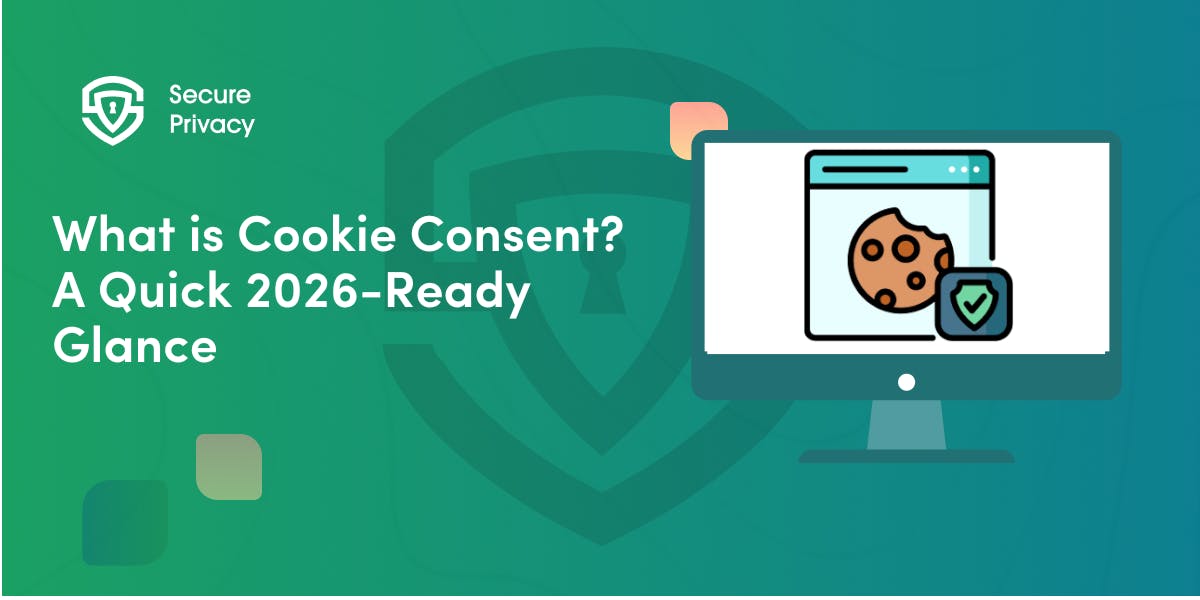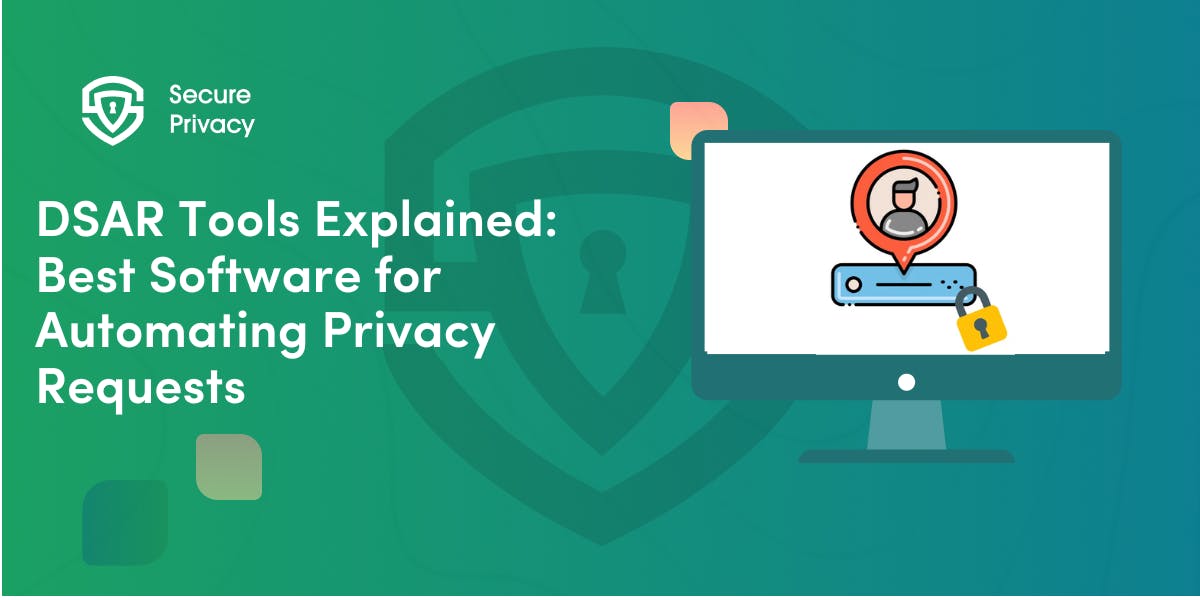iOS vs tvOS Consent Management: Key Differences for Privacy Compliance
Your development team builds Apple apps for both iPhone and Apple TV platforms — then you discover consent management requirements differ fundamentally between devices. iOS vs tvOS consent management transforms privacy compliance from a straightforward SDK integration into a multi-platform challenge, requiring separate UX strategies, storage architectures, and technical approaches for each environment.
The stakes are substantial: understanding iOS vs tvOS consent management becomes critical as Apple enforces Privacy Manifest requirements (May 2024) and tvOS imposes 1MB UserDefaults storage limits — insufficient for standard IAB TCF vendor lists. Yet 65% of tvOS apps lack proper consent mechanisms. If you're a mobile developer, privacy engineer, or compliance officer responsible for Apple platforms, you need strategies addressing iOS vs tvOS consent management without building entirely separate compliance systems.
In this guide, you'll discover how iOS vs tvOS consent management impacts technical implementation, why touch-based and remote control interfaces require distinct consent approaches, and which unified SDK solutions address both platforms while maintaining GDPR and CCPA compliance.
Why iOS vs tvOS Consent Management Differs Across Apple Platforms
Understanding iOS vs tvOS consent management requires examining how iOS vs tvOS consent management stems from fundamental platform distinctions affecting data collection, user interaction, and technical capabilities within Apple's privacy ecosystem.
Apple's Privacy Ecosystem encompasses iOS (iPhone), iPadOS (iPad), macOS (Mac), and tvOS (Apple TV). All platforms share App Tracking Transparency (ATT) framework requiring explicit permission before accessing Identifier for Advertisers (IDFA). However, iOS vs tvOS consent management diverges substantially: iOS operates in personal, portable settings with individual user control, while tvOS functions in shared living room environments serving entire households.
User Interaction Differences create the primary challenge. iOS touchscreens enable rapid navigation — users tap instantly, scroll smoothly through vendor lists. tvOS remote control navigation supports only sequential D-pad movement: up, down, left, right, select. Moving through 20 consent options requires 20 button presses with 200-500ms Bluetooth latency, making displaying 400+ IAB TCF vendors impractical and forcing simplified consent approaches.
Storage Limitations distinguish iOS vs tvOS consent management architecturally. iOS provides unlimited UserDefaults storage enabling local caching of complete IAB vendor lists, TC Strings, and preference histories. tvOS enforces strict 1MB UserDefaults limit — insufficient for full TCF v2.2 vendor lists (typically 8-10KB per vendor × 400+ vendors), forcing server-side architectures where backend systems compute consent decisions and deliver only essential flags to apps.
iOS Consent Management Explained
Understanding iOS vs tvOS consent management begins with iOS implementation. Examining iOS vs tvOS consent management reveals that iOS consent management leverages mature SDK ecosystems and intuitive touch interfaces enabling comprehensive compliance.
App Tracking Transparency (ATT) launched with iOS 14.5 (April 2021) requiring explicit permission before accessing IDFA. The standardized modal presents "Allow" or "Ask App Not to Track" options. Approximately 30% of iOS users opt into tracking. However, ATT alone fails GDPR and IAB TCF v2.2 requirements—it provides binary consent without granular legal bases. Therefore, iOS apps must implement both ATT and TCF v2.2-compliant CMP as complementary systems.
SDK Integration follows standardized patterns. Developers integrate CMP SDKs early in the app lifecycle. Recommended flow: display ATT prompt first (native Apple UI), then present CMP banner (customizable) for GDPR compliance. CMPs store consent in UserDefaults as TC Strings with IABTCF_* key prefixes. Advertising SDKs automatically query UserDefaults before serving personalized ads through addEventListener() patterns.
Privacy Manifest Requirements became mandatory May 1, 2024. All iOS apps must include PrivacyInfo.xcprivacy files declaring data types collected, Required Reason APIs usage (NSUserDefaults for consent storage), and tracking domains. Third-party SDKs must include their own manifests. Xcode 15+ combines manifests into unified Privacy Reports. Non-compliance results in App Store rejection.
tvOS Consent Management Explained
iOS vs tvOS consent management diverges substantially in CTV implementations due to technical constraints and household device contexts.
OTT Challenges reshape consent requirements. Connected TV advertising relies on programmatic exchanges serving targeted ads during content breaks. Unlike iOS where ads interrupt active engagement, tvOS ads play during passive viewing. This context makes traditional consent banners disruptive, requiring simplified flows focusing on essential choices.
ATT Limitations create unique complications. While tvOS 14.5+ enforces identical ATT requirements, household-level consent challenges emerge. On iOS, each user has individual IDFA. On tvOS, multiple household members share one physical IDFA. A single consent decision applies to entire device, creating GDPR complications if secondary users' data is processed without individual consent.
Remote Control UX addresses D-pad constraints. tvOS consent banners prioritize 2-3 main toggle groups—Essential, Analytics, Marketing—with focus states visible from 10+ feet. Bold borders and high-contrast colors ensure visibility. Minimum 16-point fonts maintain readability.
Critical innovation: QR code-based preference management. Rather than displaying full IAB TCF vendor lists requiring excessive remote scrolling, publishers display QR codes directing users to mobile phones for granular consent choices. Users scan codes, access full preference centers on touch-friendly screens, then apply consent back to tvOS automatically. This "two-screen approach" significantly improves acceptance rates while maintaining GDPR compliance.
Storage Architecture addresses the 1MB UserDefaults limit. tvOS CMPs cannot cache complete IAB vendor lists locally. Secure Privacy SDK implements server-side consent logic — backend systems store vendor lists and return only cached consent decisions to apps.
iOS vs tvOS: Core Technical Differences
Comparing iOS vs tvOS consent management reveals fundamental architectural divergences requiring platform-specific strategies.
Device Identifiers differ substantially. iOS leverages IDFA—a resettable identifier users control via Settings > Privacy & Security > Tracking. tvOS employs shared IDFA where all household members share the same device identifier, creating household fingerprint rather than individual identity and complicating GDPR's requirement for individual consent.
Consent UI Capabilities showcase constraints. iOS touchscreens enable dynamic scrolling, instantaneous confirmations, full 400+ vendor lists, and keyboard input. tvOS remote control enforces D-pad-only navigation, 10-foot viewing distance requiring minimum 16pt fonts, limited screen real estate, and focus engine unpredictability.
Storage and Synchronization separate architecturally. iOS provides unlimited UserDefaults storage enabling complete local vendor list caching, Keychain Services for secure storage, and CloudKit integration. tvOS enforces 1MB UserDefaults hard limit, extremely restricted local file storage, and server-side architecture mandatory for TCF v2.2 compliance.
Cross-Device Consent requires authentication infrastructure. Traditional synchronization demands users logging into iOS and tvOS apps with identical credentials. However, many tvOS apps don't implement authentication, forcing separate consent collection per device.
Best Practices for Multi-Platform Consent Management
Successfully addressing iOS vs tvOS consent management requires unified strategies accounting for platform differences.
Consistent User Experience maintains privacy transparency. Implement identical consent purposes and vendor lists across platforms—users should see the same categories whether on iPhone or Apple TV. Visual consistency reinforces trust using same brand colors, logos, and consent copy. However, adapt interaction patterns: touch gestures for iOS, D-pad navigation for tvOS.
Centralized Consent APIs enable synchronization. Leading CMPs provide server-side consent management APIs storing user preferences centrally. When users log into the iOS app, consent syncs to tvOS automatically, eliminating duplicate consent prompts and ensuring consistent privacy choices.
Testing Consent Flows validates compliance. Use Xcode Simulator for iOS initial testing but transition to physical devices for final validation. For tvOS, testing on actual hardware is mandatory—simulators don't replicate remote control latency, focus state rendering, or 10-foot visibility constraints.
Privacy Manifest Compliance applies equally to both platforms. Use Xcode 15+ to generate PrivacyInfo.xcprivacy files declaring NSUserDefaults usage for consent storage, data types collected, and tracking domains. Update all third-party SDKs to manifest-compliant versions.
GDPR and CCPA Compliance for iOS vs tvOS
Regulatory compliance shapes iOS vs tvOS consent management implementation strategies. Understanding iOS vs tvOS consent management requires addressing how privacy laws apply differently across platforms.
GDPR Requirements mandate explicit consent before processing personal data. iOS easily implements per-purpose, per-vendor granular consent. tvOS struggles with granularity due to remote navigation constraints. Household-level tvOS consent complicates individual rights — if primary account holder consents, secondary users may have data processed without their consent. Compliance workaround: implement per-profile consent on tvOS apps accessed by multiple household members.
Data Subject Rights require platform-specific fulfillment. Right to access: iOS apps provide data export UI with in-app DSAR forms. tvOS household DSAR requests may span multiple users. Right to deletion: iOS users delete app plus data easily. tvOS household deletion affects all users. Right to withdraw: iOS one-tap withdrawal satisfies "ease of withdrawal." tvOS QR code workflow creates friction but remains GDPR-defensible.
CCPA/CPRA Compliance applies equally to both platforms. Consumer rights include right to know, delete (45-day response), opt-out ("Do Not Sell or Share" link), and non-discrimination. Sensitive Personal Information requires separate explicit consent. tvOS household-level devices create ambiguity—CCPA protects households, but CPRA's definition as multiple individuals complicates tvOS consent.
ATT and GDPR Relationship clarifies requirements. ATT satisfies Apple's platform requirements but is not GDPR-sufficient alone. ATT provides binary consent without expressing granular legal bases required by GDPR Article 6. Therefore, apps must implement both ATT and TCF v2.2-compliant CMP as separate but coordinated systems.
Secure Privacy offers a simplified approach with rapid deployment (<1 day). Native iOS SDK with extensive customization and built-in Google Consent Mode v2. GDPR + CCPA + 55+ global laws covered. However, tvOS support is limited — web-based integration only. Best for iOS-first companies with tvOS as secondary consideration.
Future of Apple Platform Privacy Compliance
iOS vs tvOS consent management evolution reflects Apple's privacy leadership and regulatory pressures.
Privacy Manifest Enforcement rolled out May 2024 requiring PrivacyInfo.xcprivacy files for all App Store submissions. Q2 2024 CMP SDK updates bundled manifests. September 2024 Xcode 16 enhanced Privacy Report validation. Q4 2024 tvOS 18 extended enforcement to Apple TV apps.
ATT Evolution maintains consistency. tvOS 18 (2024) introduced on-device Siri but no ATT mechanism changes. Apple TV viewing history uses differential privacy anonymization. Apple confirms no Automatic Content Recognition (ACR) on tvOS, differentiating from Roku/Fire TV/Samsung.
TCF v2.3 Timeline approaches February 1, 2026 deadline requiring vendor/CMP implementation updates. Google CTV requirement imposes July 2025 deadline for Google-certified CMPs on streaming apps. iOS vs tvOS consent management strategies must prepare for these transitions now.
Automation Tools simplify ongoing compliance. GDPR automation platforms reduce manual consent configuration through jurisdiction detection, automatic regulatory updates, and consent flow optimization. As privacy regulations proliferate globally, automation becomes essential for maintaining iOS vs tvOS consent management across markets.
Conclusion
iOS vs tvOS consent management represents significant complexity requiring platform-specific approaches within unified privacy strategies. While both platforms share ATT framework and Privacy Manifest requirements, technical implementations diverge substantially due to interface constraints (touch versus remote), storage limitations (unlimited versus 1MB), and device contexts (individual versus household).
The 2025 regulatory environment introduces urgency: Apple's Privacy Manifest enforcement, GDPR's intensifying scrutiny of household data processing, and Google's CTV certification requirements all demand immediate compliance reviews addressing iOS vs tvOS consent management comprehensively.
For developers, the recommended path forward implements certified, platform-aware CMPs with native SDKs for each environment. Design consent UX specifically for remote navigation on tvOS with QR code fallbacks. Leverage server-side consent logic for tvOS to overcome storage constraints. Implement authenticated cross-device synchronization enabling consistent privacy choices. Test extensively on physical devices—simulators inadequately represent real-world consent experiences.
Organizations recognizing iOS vs tvOS consent management as strategic capability achieve better outcomes: maintained App Store approval through proper Privacy Manifest compliance, reduced regulatory risk through comprehensive GDPR/CCPA implementation, improved user trust through transparent privacy practices, and competitive differentiation in privacy-conscious markets through Apple's ecosystem advantages.
Ready to implement iOS vs tvOS consent management across your Apple apps? Explore unified SDK solutions from Secure Privacy that provide platform-specific implementations with shared consent storage, enabling consistent privacy compliance across iOS and tvOS while respecting each platform's unique technical constraints and user experience requirements.
Get Started For Free with the
#1 Cookie Consent Platform.
No credit card required

What is Cookie Consent? A Quick 2026-Ready Glance
Your website loads. Cookies track users. But without proper cookie consent, you're violating GDPR — risking fines up to €20 million or 4% of global revenue. Cookie consent is the legally required mechanism by which websites obtain explicit user approval before deploying non-essential tracking technologies. This requirement stems from GDPR Article 4(11) and the ePrivacy Directive, mandating that consent must be freely given, specific, informed, and unambiguous.
- Legal & News

DSAR Tools Explained: Best Software for Automating Privacy Requests
You're drowning in data subject access requests. Manual searches through dozens of systems miss regulatory deadlines and expose organizations to fines starting at $2,500 per violation. The solution? DSAR tools — purpose-built software that automates the entire process of responding to data subject access requests, from intake to delivery.
- Legal & News

IAB TCF 2.3 Explained: Requirements, Updates, and Implementation Guide (2026)
Your ad revenue dropped 40% overnight. Google stopped bidding on your inventory. Your DSP partners flagged your traffic as non-compliant. The culprit? An outdated TCF 2.2 consent string after the February 2026 enforcement deadline.
- Legal & News
- Cookie Consent

